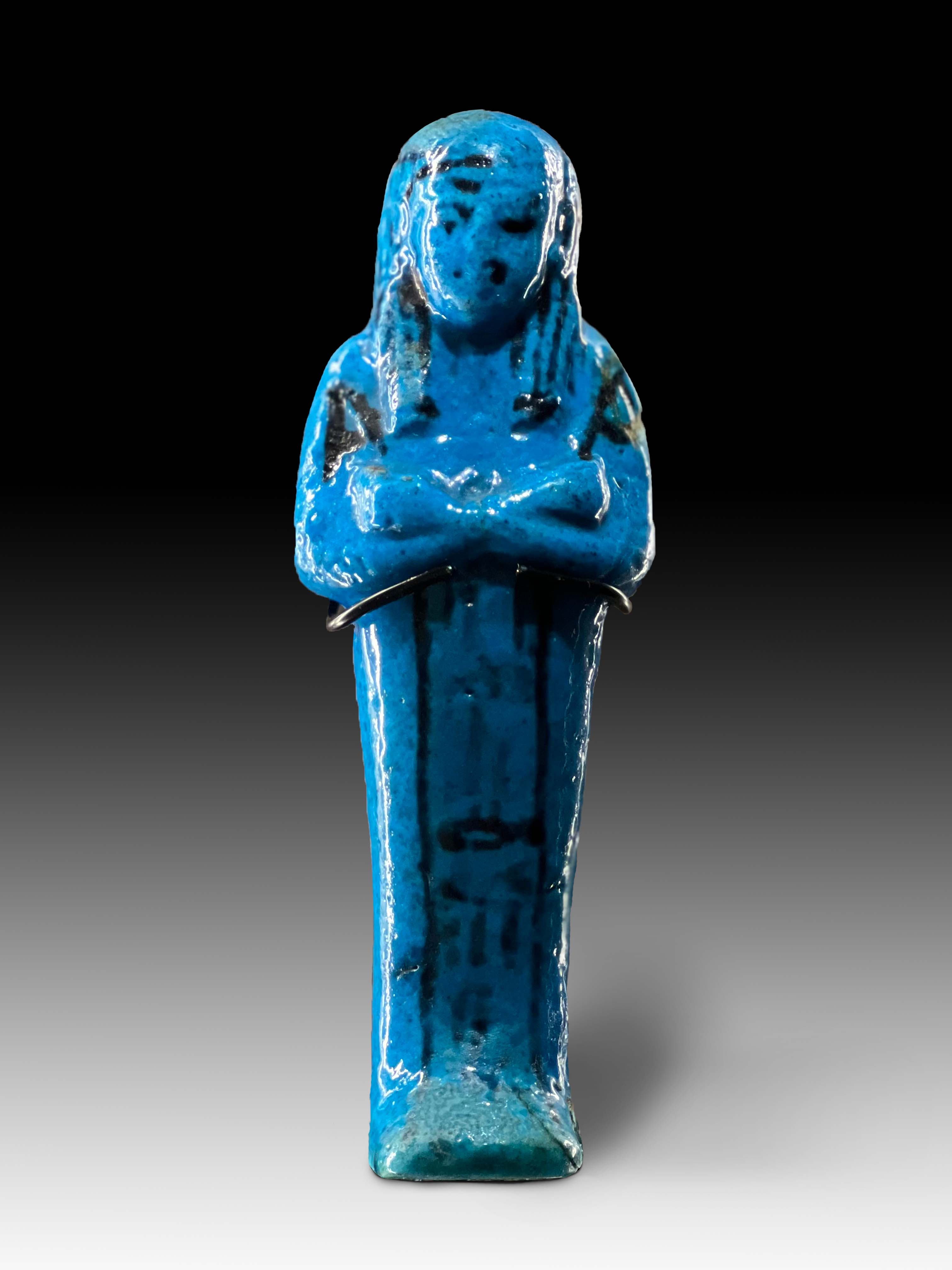
Shabti (or ushabti) dolls are mummiform figures wearing traditional ancient Egyptian headdresses. The ancient Egyptians believed that after they died, their spirits would have to work in the “Field of Reeds” owned by the god of the underworld, Osiris. This meant doing agricultural labor, which was required by all members of society, from workers to pharaohs. The wealthier nobility in Egyptian society were able to have shabtis made of coveted faience, and blue faience was meant to reflect the color of the river Nile both on earth and in the afterlife.
Ancient Egypt, Third Intermediate Period, 21st Dynasty, ca. 1077 to 943 BCE. A breathtaking example of a hand-built faience ushabti, standing in a dignified pose, that is enrobed in layers of incredibly lustrous, brilliant blue glaze. The figure presents in characteristic ushabti fashion by standing in mummiform with fused legs and feet, crossing both arms atop the chest with a pair of black-painted picks in his hands, and with a seed bag draped from both shoulders down to the middle of his back. The column of hieroglyphic symbols atop the legs identifies the figure and reads, “For the instruction of Osiris, An-mose.”
Provenance
Private Toronto, Ontario, Canada collection, by descent, acquired in Egypt in 1894 to 1896. Acquired from Artemis Gallery 2022.
Ref:
The Metropolitan Museum of Art, accession number 26.7.981